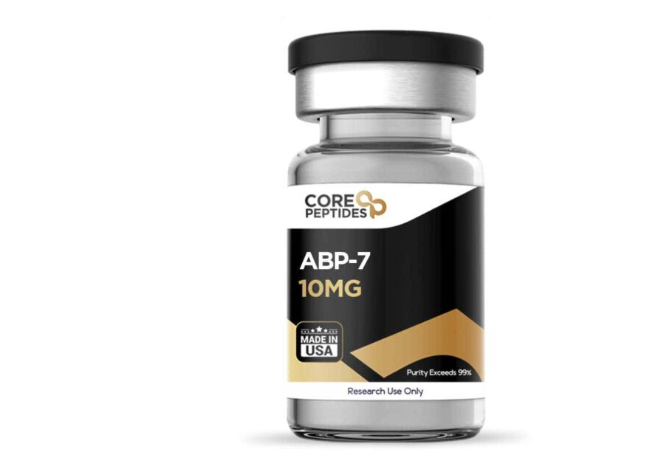Peptides have long been recognized as versatile biomolecules, with their unique structural and functional properties paving the way for advancements in various scientific domains. Among these, ABP-7 peptide has emerged as a molecule of interest, captivating researchers with its intriguing characteristics and hypothesized impacts on biological systems. This article delves into the potential implications of ABP-7 peptide in research, exploring its structural attributes, biochemical interactions, and speculative implications across diverse fields.
Structural Characteristics of ABP-7 Peptide
ABP-7 is a synthetic peptide meticulously designed to emulate certain biological motifs observed in nature. Its amino acid sequence suggests the presence of regions capable of interacting with specific cellular targets, such as receptors, enzymes, or ion channels. Studies suggest that the peptide may exhibit amphipathic properties, enabling it to interact with hydrophilic and hydrophobic environments. This feature might prove valuable in studies of membrane dynamics or lipid interactions.
Additionally, ABP-7 peptide is hypothesized to possess stability in aqueous environments and resistance to enzymatic degradation. These attributes may support its relevance in laboratory settings, allowing researchers to investigate its impacts over extended periods without significant degradation. Studies suggest that the peptide’s structural configuration might facilitate selective binding to specific ligands, highlighting its potential for targeted biochemical interactions.
Hypothesized Impacts on Cellular Mechanisms
One of the most intriguing aspects of the ABP-7 peptide is its potential to modulate cellular signaling pathways. It has been theorized that the peptide might interact with protein kinases or phosphatases, impacting phosphorylation cascades that regulate cell proliferation, differentiation, and survival. Such interactions may provide insights into how cellular communication networks are fine-tuned under various conditions.
Research indicates that ABP-7 peptide might also impact intracellular calcium dynamics, a critical factor in muscular tissue contraction, neurotransmitter release, and metabolic regulation. The peptide’s interaction with calcium-binding proteins or its potential role in modulating ion channel activity might serve as a model for understanding how calcium homeostasis is maintained in research models.
Speculative Implications in Immunological Research
Investigations purport that ABP-7 peptide might hold promise in immunological studies due to its potential to modulate immune cell functions. Findings imply that ABP-7 may impact cytokine release or receptor expression in T cells, macrophages, and other immune cells, making it a candidate for studying inflammatory and immune signaling pathways.
These properties might support researchers in exploring the molecular mechanisms underlying immune response activation and regulation, paving the way for advancements in immunity research. Furthermore, scientists hypothesize that the peptide may exhibit chemotactic properties, potentially impacting the migration of immune cells. This characteristic might be particularly relevant in tissue repair and regeneration studies, where immune cell migration is pivotal.
Potential Role in Tissue Research
ABP-7 peptide has garnered attention for its hypothesized impacts on tissue repair and regeneration. The peptide’s potential to interact with actin-binding domains suggests that it might impact cytoskeletal dynamics, a critical factor in cellular motility and morphological changes. Research indicates that by stabilizing actin in its monomeric form, ABP-7 may disrupt the polymerization process, impacting cellular behaviors such as migration and wound healing.
In the context of fibrotic tissue remodeling, ABP-7 peptide has been hypothesized to exhibit anti-fibrotic properties by modulating the activity of hepatic stellate cells. Preliminary studies suggest that the peptide may inhibit fibrogenesis and cellular proliferation by interfering with specific signaling pathways. These findings imply that ABP-7 might be a tool for exploring fibrosis mechanisms and developing tissue repair strategies.
Speculative Implications in Metabolic Research
The peptide’s potential role in metabolic regulation has also been a subject of interest. It is believed that ABP-7 might impact glucose uptake, lipid metabolism, or protein synthesis through its interaction with enzymes or co-factors essential to metabolic pathways. The peptide has been theorized to provide a model for studying metabolic adaptations in response to environmental or physiological stressors by impacting these processes.
Additionally, investigations have purported that the hypothesized interactions of the ABP-7 peptide with transport proteins and ion channels might contribute to maintaining cellular equilibrium. This property might be particularly relevant in research on nervous system function, where ionic gradients play a crucial role in neurotransmission and molecular excitability.
Future Directions and Speculative Implications
The versatility of the ABP-7 peptide positions it as a promising candidate for further exploration in various scientific domains. Its structural attributes and hypothesized impacts on cellular mechanisms suggest it might be a valuable tool in experimental models. The peptide’s potential implications vary, from immunological studies to tissue repair and metabolic research.
As professionals continue to investigate the properties of ABP-7 peptide, new avenues for its potential impact may emerge, shedding light on its potential role in advancing scientific knowledge. While much remains to be discovered, the peptide’s unique characteristics and speculative implications underscore its significance in research. Licensed professionals may find ABP-7 for sale at the best price and highest quality at Core Peptides.
References
[i] Hao, Z.-W., Zhang, Z.-Y., Wang, Z.-P., Wang, Y., Chen, J.-Y., Chen, T.-H., Shi, G., Li, H., Wang, J.-W., Dong, M.-C., & Li, J.-F. (2024). Bioactive peptides and proteins for tissue repair: Microenvironment modulation, rational delivery, and clinical potential. Military Medical Research, 11, 75.
[ii] Li, S., Yu, Q., Li, H., Chen, M., Jin, Y., & Liu, D. (2023). Self-assembled peptide hydrogels in regenerative medicine. Gels, 9(8), 653.
[iii] Pirtskhalava, M., Vishnepolsky, B., & Grigolava, M. (2013). Transmembrane and antimicrobial peptides: Hydrophobicity, amphiphilicity, and propensity to aggregation. arXiv.
[iv] Rodríguez, A., et al. (2011). Aquaglyceroporins: Drug targets for metabolic diseases? Frontiers in Physiology, 8, 1–10.
[v] Zhang, Y., & Yang, J.-M. (2013). Altered energy metabolism in cancer: A unique opportunity for therapeutic intervention. Cancer Biology & Therapy, 14(1), 81–89.








